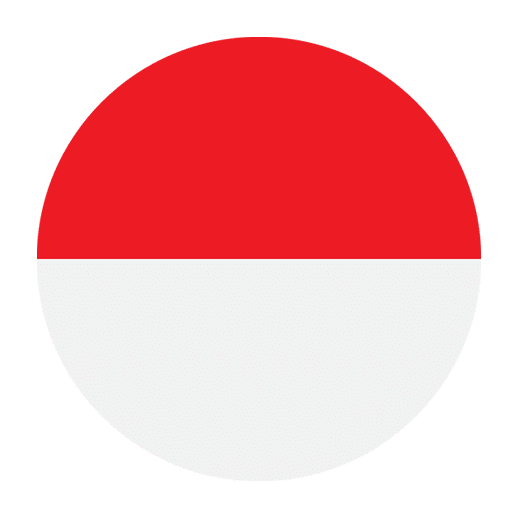Navigating the nuances of formal and informal language is essential when learning Indonesian. Like many languages, Indonesian has distinct registers for different social contexts, and understanding when to use formal versus informal language can significantly impact communication effectiveness and relationships. This article will guide you through the various aspects of using formal and informal language in Indonesian, providing examples and practical tips to help you navigate these social waters with confidence.
Understanding the Basics
The Indonesian language, known as Bahasa Indonesia, is used by millions of people across the Indonesian archipelago. It has a rich linguistic heritage, influenced by Malay, Dutch, Javanese, and other regional languages. One of its defining features is the clear distinction between formal and informal registers.
Formal language, or “bahasa baku,” is typically used in official, professional, and polite contexts. This includes interactions with elders, authority figures, in business settings, and during formal events. Informal language, on the other hand, is used among friends, peers, and in casual settings. Understanding these differences is crucial for effective communication and avoiding social faux pas.
Pronouns
Pronouns are one of the most noticeable areas where formal and informal Indonesian diverge. Here are the most common pronouns used in both contexts:
Formal Pronouns:
– “Saya” (I, me) – This is the standard formal pronoun used in most situations.
– “Anda” (You) – A polite form of address, often used in customer service, business, and formal conversations.
– “Beliau” (He, she) – Used to refer to someone respectfully, especially elders or people in higher positions.
Informal Pronouns:
– “Aku” (I, me) – More casual and often used among friends or those of the same age.
– “Kamu” (You) – Casual form of address, used among peers or in informal settings.
– “Dia” (He, she) – Used in informal contexts and does not carry the same level of respect as “beliau.”
Greetings and Parting Words
The way you greet and say goodbye to someone can also vary between formal and informal Indonesian.
Formal Greetings:
– “Selamat pagi” (Good morning)
– “Selamat siang” (Good afternoon)
– “Selamat sore” (Good evening)
– “Selamat malam” (Good night)
– “Apa kabar?” (How are you?) – A common way to ask about someone’s well-being in a formal setting.
Informal Greetings:
– “Hai” (Hi)
– “Halo” (Hello)
– “Apa kabar?” – Can also be used informally, but the tone and context will differ.
– “Gimana kabarnya?” (How’s it going?) – A more relaxed way of asking about someone’s well-being.
Formal Parting Words:
– “Selamat tinggal” (Goodbye) – Used when the person you’re speaking to is staying, and you are leaving.
– “Selamat jalan” (Safe travels) – Used when the person you’re speaking to is leaving.
– “Sampai jumpa” (See you later)
Informal Parting Words:
– “Dadah” (Bye)
– “Sampai nanti” (See you later)
– “Sampai ketemu” (See you)
Vocabulary and Phrasing
The choice of words and how you phrase your sentences can also indicate the level of formality.
Formal Vocabulary:
– “Mohon” (Please) – A very polite way of making a request.
– “Terima kasih” (Thank you) – Standard way to express gratitude.
– “Maaf” (Sorry) – Used to apologize formally.
Informal Vocabulary:
– “Tolong” (Please) – Used casually among friends or peers.
– “Makasih” (Thanks) – A more relaxed way to say thank you.
– “Sorry” (Sorry) – A borrowed word from English, often used informally.
Formal Phrasing:
– “Saya ingin bertanya…” (I would like to ask…)
– “Apakah Anda bisa membantu saya?” (Can you help me?)
– “Dengan hormat,” (Respectfully,) – Often used at the beginning of formal letters or emails.
Informal Phrasing:
– “Aku mau nanya…” (I want to ask…)
– “Bisa bantuin gue?” (Can you help me?)
– “Hey,” – Often used at the beginning of informal communications.
Titles and Forms of Address
In Indonesian culture, titles and forms of address are essential, particularly in formal contexts. These titles often convey respect and acknowledge the social hierarchy.
Formal Titles:
– “Bapak” or “Pak” (Mr., Sir) – Used to address or refer to men respectfully.
– “Ibu” or “Bu” (Mrs., Ma’am) – Used to address or refer to women respectfully.
– “Saudara” or “Saudari” (Mr., Ms.) – Used in formal speeches or writings.
Informal Titles:
– Using first names or nicknames – Common among friends, peers, and in casual settings.
Verb Forms and Sentence Structure
Indonesian verbs do not conjugate based on tense or subject, but the formality can still be reflected in the choice of words and sentence structure.
Formal Verbs:
– “Makan” (to eat) – In formal contexts, you might say, “Saya makan siang” (I am eating lunch).
– “Pergi” (to go) – Formally, you might say, “Saya akan pergi ke kantor” (I will go to the office).
Informal Verbs:
– “Makan” – In informal settings, you might say, “Aku makan siang” (I am eating lunch).
– “Pergi” – Informally, you might say, “Aku mau pergi ke kantor” (I want to go to the office).
Formal Sentence Structure:
– Typically more complete and polite. For example, “Apakah Anda bisa memberikan saya informasi tersebut?” (Can you provide me with that information?)
Informal Sentence Structure:
– More straightforward and less formal. For example, “Bisa kasih info itu nggak?” (Can you give that info?)
Non-Verbal Communication
Non-verbal communication is just as important as spoken language in Indonesian culture. Body language, gestures, and even facial expressions can convey a great deal about the formality of an interaction.
Formal Non-Verbal Cues:
– Slight bowing of the head when greeting or saying goodbye.
– Using both hands when giving or receiving something as a sign of respect.
– Maintaining a respectful distance and avoiding too much direct eye contact with elders or authority figures.
Informal Non-Verbal Cues:
– Casual handshakes or high-fives among friends.
– More relaxed body language and closer personal space.
– Direct eye contact is more acceptable among peers.
Context-Specific Situations
Understanding the context in which you are communicating is key to deciding whether to use formal or informal language. Here are a few specific situations to consider:
In the Workplace:
– Use formal language when speaking to superiors, clients, or during meetings.
– Informal language may be used among colleagues of the same rank during casual conversations or breaks.
In Educational Settings:
– Formal language is expected when speaking to teachers, professors, or school staff.
– Informal language can be used with classmates or friends.
In Social Gatherings:
– Formal language might be necessary when meeting someone for the first time or when interacting with older individuals.
– Informal language is suitable for casual conversations with friends or peers.
Regional Variations
Indonesia is a vast country with numerous ethnic groups and languages. While Bahasa Indonesia is the national language, regional variations and local dialects can influence the formality of language.
Javanese Influence:
– In Java, particularly in Yogyakarta and Surakarta, the Javanese language has a significant impact on how Indonesian is spoken. Javanese has its own levels of formality (ngoko, madya, krama) that can influence Indonesian usage.
Bali and Other Regions:
– In Bali and other regions, local languages and customs may affect how formal or informal Indonesian is spoken. It’s important to be aware of these regional differences and adapt accordingly.
Practice and Immersion
The best way to become proficient in navigating formal and informal Indonesian is through practice and immersion. Here are some tips to help you improve:
Engage with Native Speakers:
– Practice speaking with native Indonesian speakers in both formal and informal settings. This will help you understand the nuances and get feedback on your usage.
Watch Indonesian Media:
– Watch Indonesian TV shows, movies, and news programs. Pay attention to how language is used in different contexts and try to mimic the speech patterns.
Use Language Learning Apps:
– There are several apps available that can help you practice Indonesian. Look for ones that offer dialogues and scenarios in both formal and informal settings.
Join Language Exchange Groups:
– Participate in language exchange groups or online forums where you can practice with other learners and native speakers.
Conclusion
Understanding the difference between formal and informal language in Indonesian is crucial for effective communication and building relationships. By paying attention to pronouns, greetings, vocabulary, and non-verbal cues, you can navigate different social contexts with ease. Practice regularly, immerse yourself in the language, and don’t be afraid to make mistakes – they are an essential part of the learning process. With time and effort, you will become more confident and proficient in using both formal and informal Indonesian.

